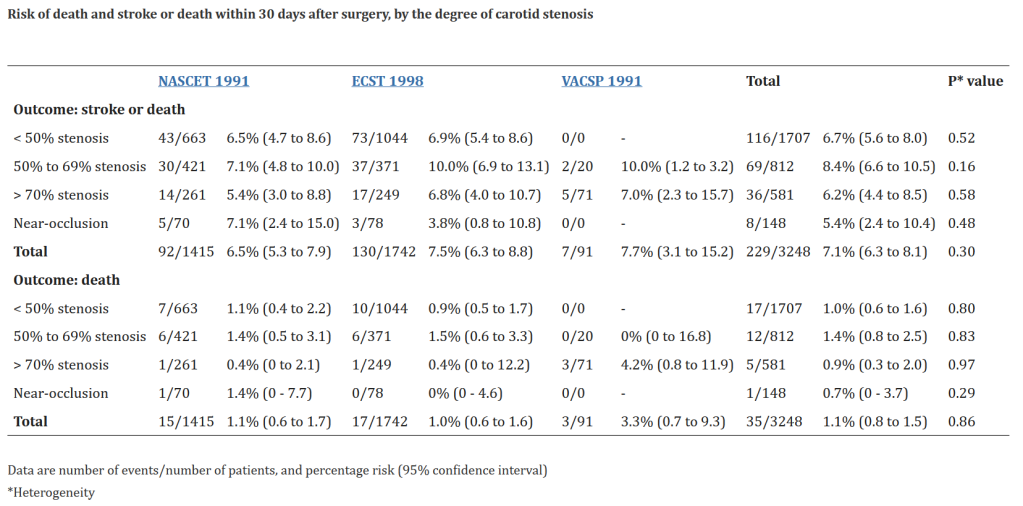Bae C, et al. Comparative Review of the Treatment Methodologies of Carotid Stenosis. Int J Angiol. 2015 Sep;24(3):215-22. .
Free full-text.
The treatment of carotid stenosis entails three methodologies, namely, medical management, carotid angioplasty and stenting (CAS), as well as carotid endarterectomy (CEA). The North American Symptomatic Carotid Endarterectomy Trial (NASCET) and European Carotid Surgery Trial (ECST) have shown that symptomatic carotid stenosis greater than 70% is best treated with CEA. In asymptomatic patients with carotid stenosis greater than 60%, CEA was more beneficial than treatment with aspirin alone according to the Asymptomatic Carotid Atherosclerosis (ACAS) and Asymptomatic Carotid Stenosis Trial (ACST) trials. When CAS is compared with CEA, the CREST resulted in similar rates of ipsilateral stroke and death rates regardless of symptoms. However, CAS not only increased adverse effects in women, it also amplified stroke rates and death in elderly patients compared with CEA. CAS can maximize its utility in treating focal restenosis after CEA and patients with overwhelming cardiac risk or prior neck irradiation. When performing CEA, using a patch was equated to a more durable result than primary closure, whereas eversion technique is a new methodology deserving a spotlight. Comparing the three major treatment strategies of carotid stenosis has intrinsic drawbacks, as most trials are outdated and they vary in their premises, definitions, and study designs. With the newly codified best medical management including antiplatelet therapies with aspirin and clopidogrel, statin, antihypertensive agents, strict diabetes control, smoking cessation, and life style change, the current trials may demonstrate that asymptomatic carotid stenosis is best treated with best medical therapy. The ongoing trials will illuminate and reshape the treatment paradigm for symptomatic and asymptomatic carotid stenosis.
Continue reading →

